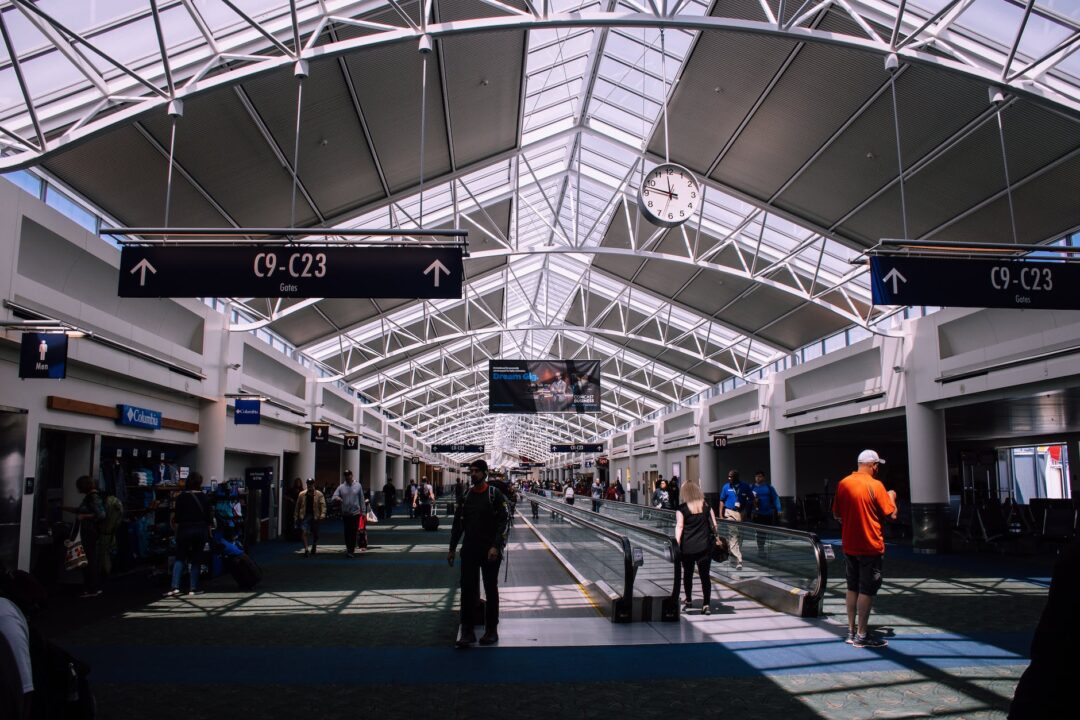Embarking on air travel is not just about reaching a destination; it unfolds as a multi-dimensional experience, encompassing diverse altitudes, confined spaces, and the ever-changing dynamics of air pressure. While the prospect of in-flight meals and beverages can elicit excitement, not all choices align with pursuing a comfortable travel experience.
Leveraging their profound understanding of the aviation environment, flight attendants serve as invaluable guides, offering insights into the nuances of foods and drinks that passengers should exercise caution with while soaring at 30,000 feet. Within the confines of this article, we will embark on a comprehensive exploration, delving into the intricacies of items that are best excluded from your in-flight menu. By embracing this knowledge, passengers can cultivate a more enjoyable, seamless, and stress-free journey through the vast skies.
1. Alcohol: The Balance of Relaxation
Alcohol is a common choice for passengers looking to unwind or ease the stress of flying. However, flight attendants caution against excessive alcohol consumption during flights. The reduced air pressure in the cabin can intensify the effects of alcohol, leading to quicker intoxication. Additionally, alcohol is a diuretic, meaning it promotes the loss of fluids, contributing to dehydration. Given that the cabin air is already dry, excessive alcohol consumption can exacerbate this condition. To maintain a balance, it’s advisable to limit alcohol intake and alternate with water to stay hydrated.
2. Water (that isn’t bottled): The Hidden Risks
Staying hydrated is essential during air travel, but the source of your water matters. Flight attendants often advise against drinking tap water on airplanes due to potential contamination from the water tanks. These tanks can harbor bacteria, affecting the quality of tap water. To ensure safe hydration, opt for bottled water provided by the airline. The bottles are sealed, minimizing the risk of contamination, and providing a reliable source of clean water throughout the flight.
3. Ice: A Potential Health Hazard
While it might seem harmless, flight attendants often advise against consuming ice on airplanes. The ice used in beverages is typically made from the same tap water that is cautioned against for direct consumption. If the water quality is a concern, skipping the ice in your drinks is a small precaution that can help avoid potential health risks associated with contaminated water.
4. Tea and Coffee: A Piping Hot Concern
Tea and coffee are commonly served during flights, but flight attendants emphasize caution when indulging in these caffeinated beverages. The water used to prepare these drinks may come from the airplane’s water tanks, raising concerns about its quality. Additionally, the caffeine content in tea and coffee can contribute to dehydration, a condition already exacerbated by the dry cabin air. To enjoy your favorite hot beverages safely, consider bringing your tea bags or instant coffee and requesting hot water from a sealed bottle.
5. Cheese Boards: A Flight Risk for Perishables
Cheese boards may be a better choice, often perceived as a sophisticated in-flight snack. Perishable items like cheese can be susceptible to compromised quality and safety during the flight. The temperature variations in the aircraft’s storage and serving conditions can pose a risk to dairy products. If you’re a cheese enthusiast, it’s advisable to savor such delicacies on solid ground, where quality and safety can be more reliably maintained.
6. Steak: A Culinary Challenge in the Sky
While in-flight meals often include meat options, flight attendants recommend avoiding steak. The challenges of preparing and serving steak at high altitudes can result in uneven cooking, potentially leading to food safety concerns. Opting for well-cooked alternatives like chicken or fish can reduce the risk of undercooked meat, ensuring a safer dining experience.
7. Soup: A Broth of Inconvenience
Soup might seem comforting during a flight, but it comes with concerns. The potential for spills and the challenge of consuming hot liquid in a confined space make soup a less-than-ideal option for air travel. Additionally, some soups may have a high sodium content, contributing to dehydration. If you’re craving a warm option, consider alternatives like sandwiches or wraps that are easier to manage and less likely to cause spills.
8. Pasta: A Starchy Conundrum
Pasta, a standard inclusion in in-flight meals, may be better for some. The high carbohydrate content can leave you feeling bloated, especially in the reduced cabin pressure environment. If you’re looking for a lighter option, consider alternatives like salads or dishes with lean proteins that won’t weigh you down.
Conclusion
To culminate our exploration, it is imperative to recognize that our choices regarding our in-flight sustenance profoundly impact our journey’s ease and our overall well-being. Flight attendants, the seasoned custodians of the aviation realm, generously offer insights garnered from their wealth of experience, guiding passengers on the culinary do’s and don’ts for a harmonious flight. Whether it involves judiciously limiting alcohol intake to mitigate the effects of altitude or conscientiously sidestepping potentially tainted water sources, these precautions are integral to nurturing a serene journey.
As we weave through the culinary nuances of air travel, it becomes evident that opting for well-cooked alternatives to delicate choices like steak or steering clear of spill-prone options like soup can contribute to a more seamless travel experience. The wisdom imparted by flight attendants extends beyond mere dietary suggestions; it is a mosaic of considerations that ensures passengers arrive at their destination physically and mentally invigorated.
The next time you step aboard an aircraft, consider it an opportunity to engage in a dialogue with your well-being. By heeding the counsel of those who navigate the skies daily, you fortify your journey against potential discomforts and lay the groundwork for an expedition that transcends the mere act of reaching a destination. Embrace the airborne guidance, make mindful culinary choices, and navigate the skies with a spirit primed for safe travels and unforgettable adventures. Bon voyage!





